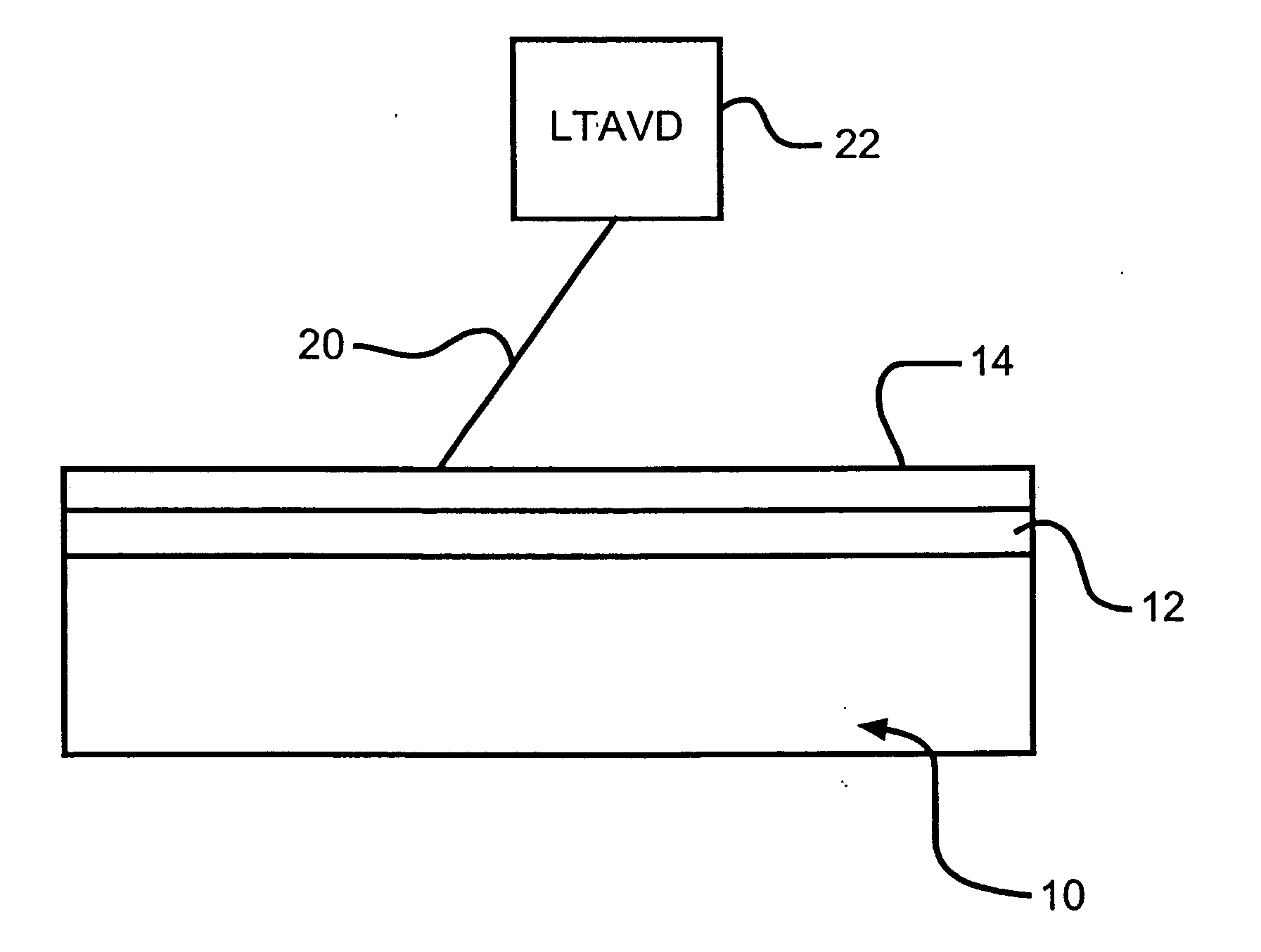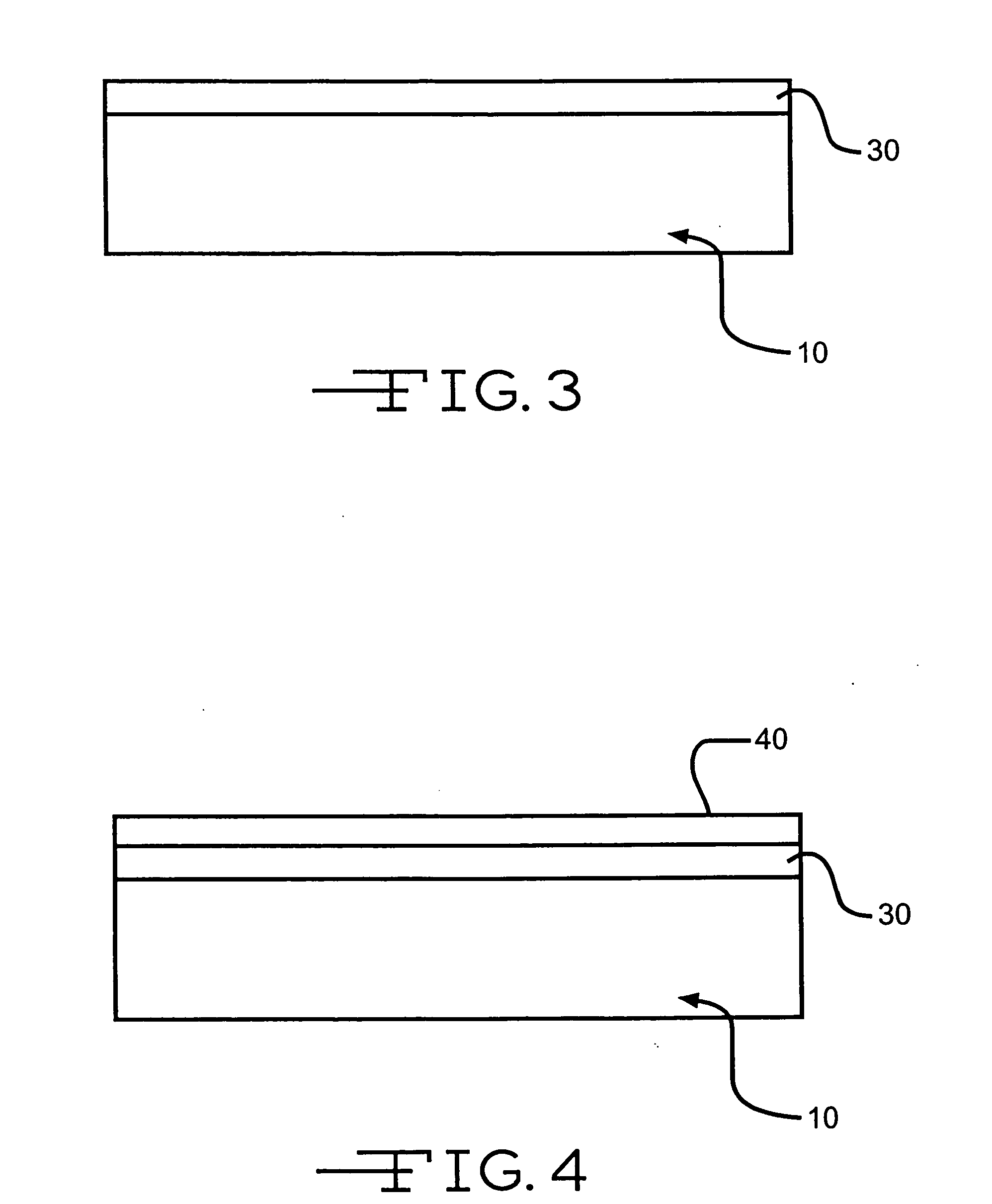Method for improving electrical conductivity of metals, metal alloys and metal oxides
a technology applied in the field of metal alloys and metal oxides, can solve the problems of high cost of fabricating electrical devices incorporating these materials, high cost of materials employed, and time-consuming steps required to plate the substrate, so as to improve the quality of the treated surface, prevent substrate degradation and deformation, and enhance the electrical conductivity of metals
- Summary
- Abstract
- Description
- Claims
- Application Information
AI Technical Summary
Benefits of technology
Problems solved by technology
Method used
Image
Examples
example
[0020] A tantalum or titanium substrate similar to substrate 10 shown in FIG. 1 is first abraded on one side using a 3M Scotch-brite pad of very fine type. This produces a rough surface on the side to be coated. It is then degreased and cleaned. This is accomplished by cleaning the foil in an ultrasonic bath using acetone as a solvent for 10 minutes. Next it is washed in an ultrasonic methanol bath and then blow dried using dry, clean compressed air.
[0021] The substrate is now ready to be coated with palladium. It is placed in a Low Temperature Arc Vapor Deposition (LTAVD) apparatus similar to apparatus 22 of FIG. 2 to be coated. After the sample is loaded into the apparatus the pressue in the deposition chamber is lowered by a vacuum pump to 10−5-10−6 Torr. This gets rid of all waste gases, specially oxygen. In this process oxygen is a contaminant. The pressue is brought up to the mTorr range by introducing argon into the chamber. The substrate is biased to 600V and an arc is stru...
PUM
| Property | Measurement | Unit |
|---|---|---|
| Thickness | aaaaa | aaaaa |
| Temperature | aaaaa | aaaaa |
| Time | aaaaa | aaaaa |
Abstract
Description
Claims
Application Information
 Login to View More
Login to View More - R&D
- Intellectual Property
- Life Sciences
- Materials
- Tech Scout
- Unparalleled Data Quality
- Higher Quality Content
- 60% Fewer Hallucinations
Browse by: Latest US Patents, China's latest patents, Technical Efficacy Thesaurus, Application Domain, Technology Topic, Popular Technical Reports.
© 2025 PatSnap. All rights reserved.Legal|Privacy policy|Modern Slavery Act Transparency Statement|Sitemap|About US| Contact US: help@patsnap.com



